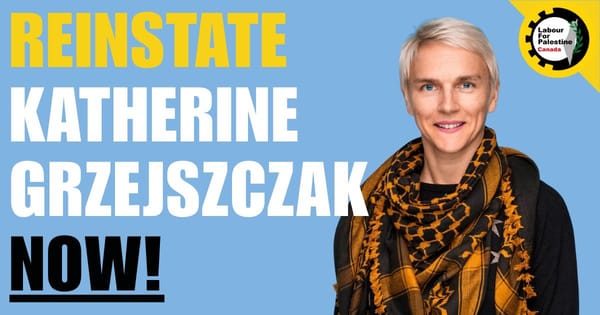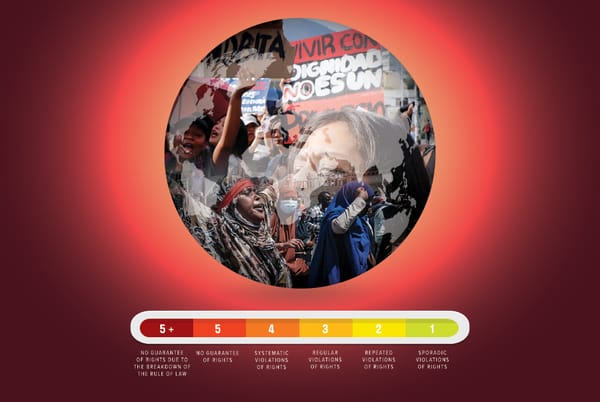The October jobs report released last week seems to have shocked much of the commentariat. The monthly Labour Force Survey (LFS) showed a surprisingly strong labour market despite the Bank of Canada’s several rounds of interest rate hikes and predictions from economists that a downturn is on the horizon.
The Canadian economy added 108,000 jobs in October, largely reversing the losses of the past four months. Unemployment remained largely steady at 5.2 per cent, while wage growth picked up somewhat, coming in at 5.6 per cent year-over-year. Job creation was also entirely in full-time employment and consisted of a greater share (roughly 75 per cent) of private sector jobs than has been the case in past months. While nothing to celebrate, this mild employment growth was unanticipated given the monetary and fiscal measures undertaken by the Bank of Canada and federal government over the past several months in response to inflation.
Despite the better than expected employment figures, it’s still very likely that the Canadian economy is heading for recession in early 2023, particularly as the federal government continues to withdraw fiscal demand from the economy. As economist Jim Stanford commented to me, “Usually it takes 12 to 18 months for the full impact of higher interest rates on the real economy to be felt.” In fact, the surprise figures in October’s LFS may encourage the central bank to continue its aggressive interest rate policy — to ultimately produce the desired result of driving up unemployment.
Last month’s labour market figures are set against the ongoing concern about a so-called “labour shortage” and tight labour market. Whether we understand recent developments in the Canadian labour market as a “labour shortage” is still up for debate. I’ve been somewhat skeptical of this notion for a number of reasons.
First, although the job vacancy rate remains elevated, there are nevertheless many un- and under-employed workers out there. The LFS, for example, shows that the adjusted unemployment rate, including workers who didn’t look for work, was still 7.1 per cent. As well, the relatively stable official unemployment rate of 5.2 per cent has been in part maintained by people exiting the labour force over the past months. Although labour force participation improved somewhat in October, it remains stuck around 65 per cent and has not recovered to the higher levels recorded just before the 2008 financial crisis.
Second, a gap remains between the wages employers are offering and the wages workers expect. It makes little sense to speak of a broad labour shortage when a wage gap of this proportion persists. Although nominal wages are growing at an above-average rate, inflation continues to eat into workers’ purchasing power.
Despite employment holding more or less steady and wages improving somewhat, the cost-of-living crisis exacerbated by inflation continues to pose challenges for broad sections of the working class. The LFS notes that more than a third (35.3 per cent) of survey respondents reported difficulty meeting financial obligations, up from one in five workers in October 2020. This problem is made worse by the fact that higher earners have been more likely to receive wage increases.
For October, the LFS found that nearly two-thirds of those earning more than $40 per hour had received a raise in the last year, while only about half of those making less than $20 per hour did. The latter group represents the bottom 25 per cent of wage earners and have been hit hardest by inflation, particularly with the rising cost of food and housing. Workers in accommodation and food services who have been with their employer for at least a year were even less likely to have received a bump in pay. These are hardly indications of a robust labour market with empowered workers.
Last, labour shortages are rarely something that afflicts the entire labour market. Rather, they’re normally sectoral phenomena. The uneven nature of employment growth in the LFS makes this clear as well. The inability of particular industries to hire workers with the skills desired is too often taken to be an indication of a general problem. Even when the issue is sectoral, it might still be more complex than a lack of workers. For example, the healthcare sector is undeniably facing a shortage of frontline staff. In part, staff shortages are a result of burnout from the pandemic, early retirements and workers exiting the sector for related reasons. But there’s also evidence that many workers in healthcare — as in many other sectors — have moved up the job and income ladder, (i.e. they haven’t quit or retired but have instead taken better paying jobs that recently opened within the sector).
Nonetheless, those who have been warning of the employment consequences of monetary tightening and projecting an impending recession (myself included) were relieved and somewhat surprised by the jobs report. That we haven’t seen a jump in unemployment and a considerable slowdown in wage growth is without doubt good news. Yet we live in strange and unstable times. There’s a very real possibility that the Bank of Canada reads this news — to the extent that they care about employment at all at this point — as evidence that further rate hikes are both necessary and less risky.
As Rishi Sondhi, an economist at TD, put it, “The Canadian labour market clearly still has some steam to let out.” I assume he meant this as a reassuring metaphor — though it’s unlikely to console the droplets making up that steam (to continue Sondhi’s analogy).
Central banks around the world have been quite explicit that they think employment is too high. Labour market tightness is a problem in their eyes. Don’t be surprised if Tiff Macklem and the Bank of Canada continue on with their path of tightening, choking further demand out of the economy and caring little about the resultant unemployment down the line. Macklem can now point to October’s LFS as evidence that his monetary policy hasn’t produced the negative employment consequences projected by the naysayers and doom-forecasters. Additional growth in nominal wages, at 5.6 per cent, could in fact draw the central bank’s attention further and indicate to Macklem that core inflation remains a pressing issue. There have been indications that the Bank’s tightening plan may soon be winding down, though forecasters are projecting between a 25 to 50 basis point hike in December.
Monthly jobs reports can be volatile and capture a small window of time. The full impacts of rate hikes and fiscal restraint might simply have not worked their way through the economy at this stage. As Stanford noted further, “We will see the larger negative effects of interest rate increases in reduced consumer spending and reduced business investment in coming months. I think a recession is almost inevitable, and based on historical experience it will be a painful one. It will also reinforce the trend toward conventional austerity thinking by governments at all levels.” Sooner or later the Bank’s aggressive series of rate hikes will produce the desired effect: thousands of workers unemployed, wage stagnation and price deflation. How long before we reach that point? Unfortunately, it seems up to the Bank of Canada to decide. It’ll be up to the Canadian labour movement to respond.







